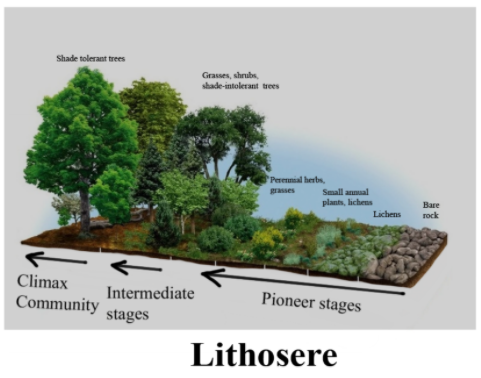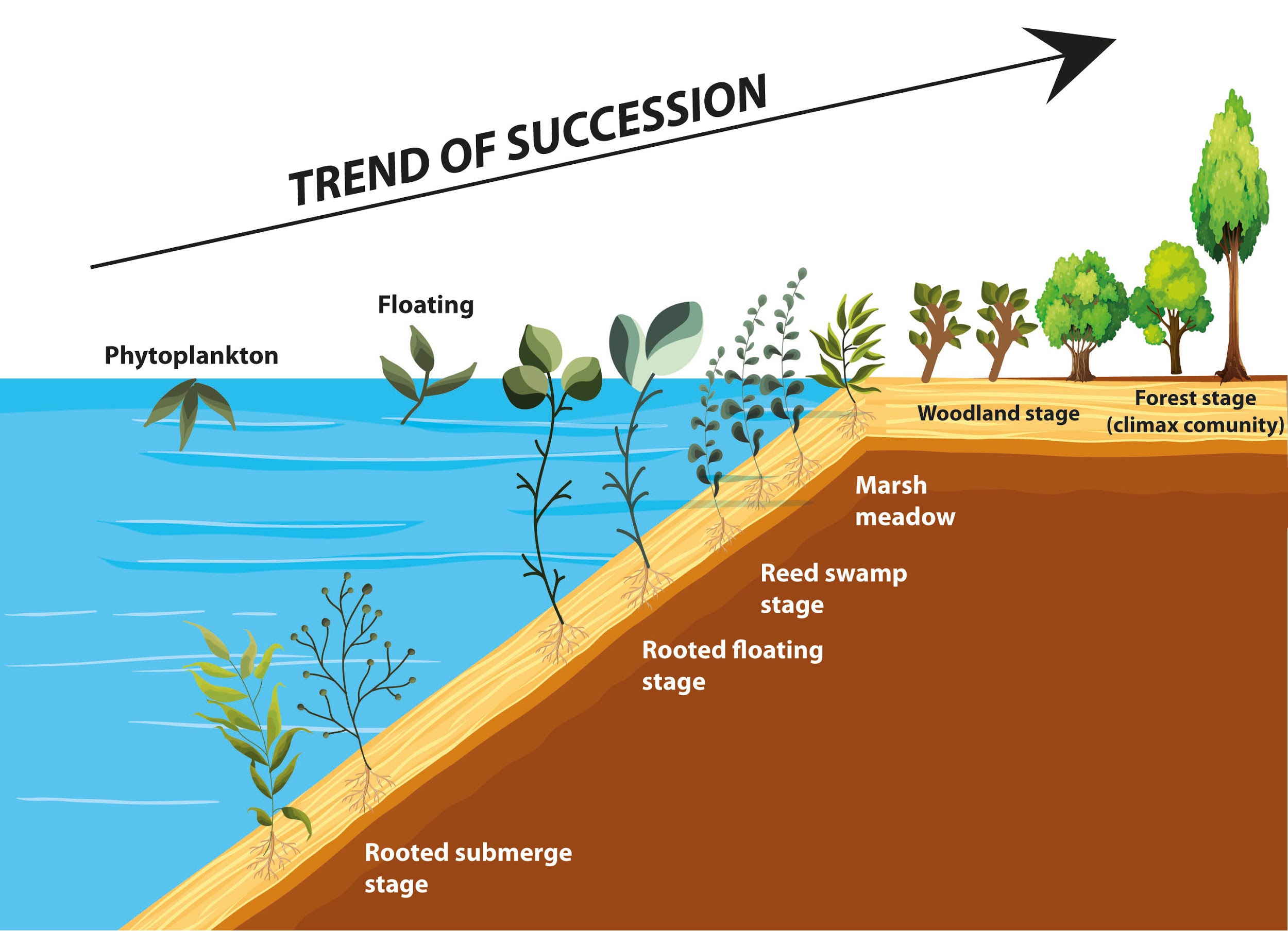
Define a sere.
Answer
564.6k+ views
Hint: A sere is a part of an ecological succession, which is the process of change in the structure of species in an ecological community over a period of time. The time scale may range from decades to millions of years.
Complete answer:
- A sere, or a seral community, is defined as the sequence of development stages of an ecological community that starts from the pioneers to the climax stage.
- A sere can be classified into a primary succession and a secondary succession. Primary succession occurs in a landscape that does not have any vegetation or the soil to support so. Secondary succession is when an event like a forest fire, harvesting, hurricane, or other natural calamities destroys or reduces an already present ecosystem to very few members. This succession occurs on already existing soil.
- Seres can be of one of the following types: hydrosere - a community that forms in water; lithosere - a community that forms on rocks; psammosere - a community that forms on sand; xerosere - a community that forms on a dry and arid area; halosere - a community that forms on a marshy and saline area.
Additional Information: - Ecological succession can be driven in two different ways - allogenic succession or autogenic succession.
- Allogenic succession is driven by the abiotic components of the ecosystem such as volcanoes, meteors, flooding, etc.
- Autogenic succession is driven by the biotic components of the ecosystem such as plant growth and death, decomposition of detritus, etc.


Note: - Secondary succession proceeds faster than primary succession.
- The succession stages in a sere can be predicted by computer modeling.
Complete answer:
- A sere, or a seral community, is defined as the sequence of development stages of an ecological community that starts from the pioneers to the climax stage.
- A sere can be classified into a primary succession and a secondary succession. Primary succession occurs in a landscape that does not have any vegetation or the soil to support so. Secondary succession is when an event like a forest fire, harvesting, hurricane, or other natural calamities destroys or reduces an already present ecosystem to very few members. This succession occurs on already existing soil.
- Seres can be of one of the following types: hydrosere - a community that forms in water; lithosere - a community that forms on rocks; psammosere - a community that forms on sand; xerosere - a community that forms on a dry and arid area; halosere - a community that forms on a marshy and saline area.
Additional Information: - Ecological succession can be driven in two different ways - allogenic succession or autogenic succession.
- Allogenic succession is driven by the abiotic components of the ecosystem such as volcanoes, meteors, flooding, etc.
- Autogenic succession is driven by the biotic components of the ecosystem such as plant growth and death, decomposition of detritus, etc.


Note: - Secondary succession proceeds faster than primary succession.
- The succession stages in a sere can be predicted by computer modeling.
Recently Updated Pages
Master Class 12 Economics: Engaging Questions & Answers for Success

Master Class 12 Maths: Engaging Questions & Answers for Success

Master Class 12 Biology: Engaging Questions & Answers for Success

Master Class 12 Physics: Engaging Questions & Answers for Success

Master Class 8 Maths: Engaging Questions & Answers for Success

Class 8 Question and Answer - Your Ultimate Solutions Guide

Trending doubts
What is meant by exothermic and endothermic reactions class 11 chemistry CBSE

Which animal has three hearts class 11 biology CBSE

10 examples of friction in our daily life

One Metric ton is equal to kg A 10000 B 1000 C 100 class 11 physics CBSE

1 Quintal is equal to a 110 kg b 10 kg c 100kg d 1000 class 11 physics CBSE

Difference Between Prokaryotic Cells and Eukaryotic Cells




